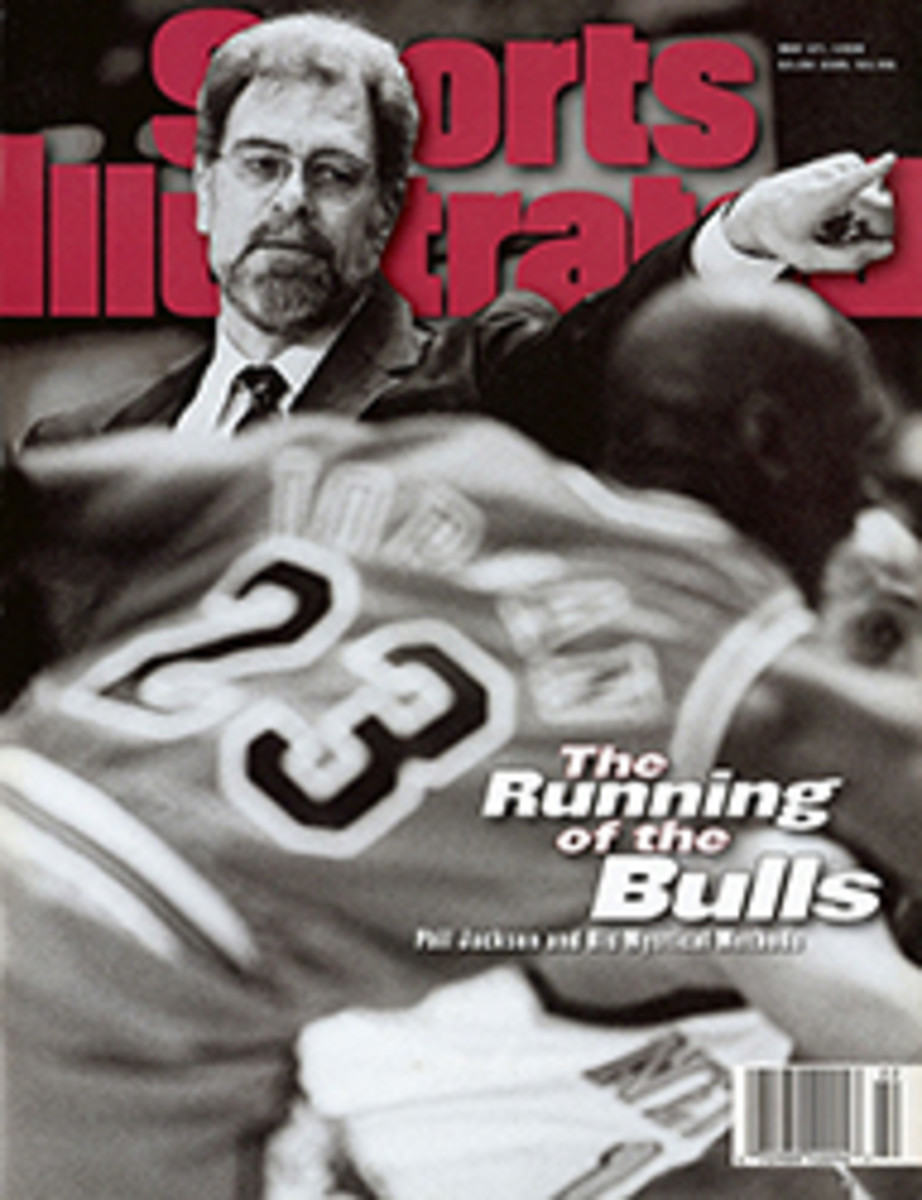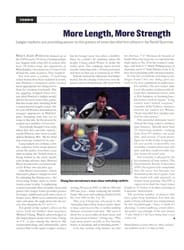
MORE LENGTH, MORE STRENGTH LONGER RACKETS ARE PROVIDING POWER TO THE GAMES OF EVEN THE SHORTEST PLAYERS
When John Powless showed up at the USTA men's 55 Grass
Championships last August with a bag full of rackets that were
29 inches long, his opponents at Philadelphia's Germantown
Cricket Club all had the same reaction. They laughed.
For well over a century, 27-inch-long racket frames have been
standard in tennis, and Powless's elongated sticks seemed more
appropriate for raking leaves than for stroking forehands. But
the giggling stopped when foes saw what Powless's mighty model
did for his serve-and-volley game. Just two weeks after
switching from a conventional-length racket, the 63-year-old
Powless dominated his younger opponents in Philadelphia,
dropping only one set en route to the title. In the process he
racked up a number of converts.
"Everybody thought I was crazy when they first saw [the
racket]," recalls Powless, who owns a tennis club in Madison,
Wis. "By the third day everyone wanted to try one."
Long rackets are evoking a similar response from tennis players
across the nation. Less than a year after its debut, the 29-inch
frame is being hailed as the most significant design advance
since Howard Head invented the oversized racket for Prince two
decades ago.
Like Head's innovation--which increased a player's margin of
error by enlarging the hitting area--the extra-long frame aims
to make tennis easier to play. Lengthening a racket provides
three benefits: increased power (the longer frame provides
greater leverage), additional reach and a more effective serve.
With every additional inch in one's arm span, the angle down
into the service box sharpens by 5% to 6 1/2%.
For proof of the racket's effect on the serve, look no further
than baseliner Michael Chang. Widely acknowledged as the fastest
player on the men's tour, Chang, at 5'9", is also among the
shortest. His counterpunching and indomitable spirit carried him
to the game's upper reaches, but his benign serve was often a
liability. Since he couldn't do anything about his height, Chang
asked Prince to make his racket grow. The company spent several
months tinkering with a 28-inch prototype and then let him use
it exclusively in 1994.
Nobody noticed the difference in Chang's model, but the change
in his serve was apparent almost immediately. He went from
serving 256 aces in 1993, to 366 in 1994 and 499 last
year--while reducing his double faults. His year-end ranking
climbed from No. 8 in 1993 to No. 5 in '95.
This year Chang has advanced to the Australian Open final,
beaten Andre Agassi twice and risen to No. 4, within striking
distance of tennis's top spot. "My serve is about five to seven
miles an hour faster, and my placement is better," Chang says.
"Plus I get more power overall, so I've become better at
attacking and at finishing points."
Lest one assume long frames are just for shorties, 5'8" Mariaan
de Swardt of South Africa has used one to vault from the triple
digits to No. 28 in the women's rankings, and both 6'4" Mark
Philippoussis of Australia and 6'6" Todd Martin of the U.S. have
been practicing with extended models.
So why isn't everybody switching to the longer frame? For one
thing, pros are loath to try new equipment in midseason. For
another, the new racket adds less to the games of players who
already have monstrous serves, such as Pete Sampras, or booming
baseline games, such as Agassi. "Long rackets won't benefit
everyone," concedes John Embree, business director for rackets
for Wilson. "Some may find they sacrifice control for extra
power."
This potential downside hasn't slowed the long racket's
momentum, however. Already more than 29 extra-long
models--ranging from 28 to 29 1/4 inches--are available, and
several 32-inch prototypes are in the works. Long models are
partly responsible for reversing a recent racket-sales tailspin,
and they could overtake regular frames by year's end.
Not everyone is pleased by the development of long rackets. The
International Tennis Federation (ITF), beleaguered by complaints
that the serve has become too dominant in the men's game, fears
this trend will only intensify as frames keep growing. The ITF
is expected to limit the legal racket length to 29 inches at its
June meeting in Lausanne, Switzerland.
The growing number of players who have gone long doubtless feel
that the game is being enhanced, not compromised, by this
breakthrough. "Sure, I think it's cheating," Lenny Lindborg, a
top California senior, says jokingly of the new model. "I also
think it's the best thing that's ever come out."
David Sparrow, a senior editor at "Men's Journal," was a ball
boy at the U.S. Open in 1984.
COLOR PHOTO: NORBERT SCHMIDT Chang has served more aces since switching rackets. [Michael Chang]

